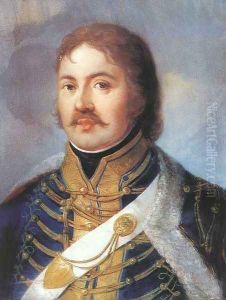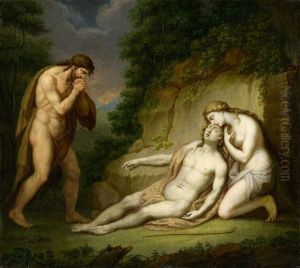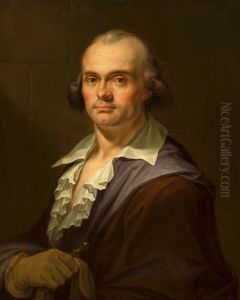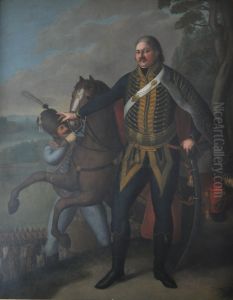Janos Mihaly Hesz Paintings
János Mihály Hesz, born in 1909, was a notable figure in the Hungarian art scene of the 20th century. His work, primarily focusing on painting, sculpture, and graphic design, encapsulates a period of significant transition and experimentation in Hungarian art, reflecting the broader European trends of modernism and post-modernism. Hesz's early life was marked by the turmoil of the First World War and the subsequent political upheavals in Hungary, experiences that would later influence his artistic vision and themes.
Hesz embarked on his artistic education in the late 1920s, a time when the echoes of the Bauhaus movement and expressionism were resonating across Europe. He studied at the Hungarian University of Fine Arts, where he was influenced by prominent figures in Hungarian art, such as István Csók and József Rippl-Rónai. His early work was characterized by a strong inclination towards expressionism, with bold colors and dynamic compositions that sought to capture the emotional and psychological depths of his subjects.
Throughout the 1930s and 1940s, Hesz's style evolved as he experimented with various mediums and techniques. His paintings from this period show a fascination with the human form, landscapes, and the urban environment, often imbued with a sense of melancholy and introspection. The Second World War and the subsequent Soviet occupation of Hungary profoundly affected Hesz, leading to a period of artistic introspection and a shift towards more abstract and symbolic content in his work.
In the post-war years, Hesz established himself as a key figure in the Hungarian art community, participating in numerous exhibitions both in Hungary and abroad. His work from the 1950s onwards reflects a continued exploration of abstract forms and a deepening interest in the spiritual and metaphysical aspects of art. Hesz was also a respected teacher, influencing a new generation of Hungarian artists through his professorship at the Hungarian University of Fine Arts.
János Mihály Hesz's contributions to Hungarian art were recognized with several awards and honors throughout his career. He remained active as an artist until his death in 1987, leaving behind a rich legacy that continues to be celebrated for its innovation, depth, and emotional resonance. Hesz's work is represented in numerous public and private collections, both in Hungary and internationally, testament to his enduring impact on the world of art.




